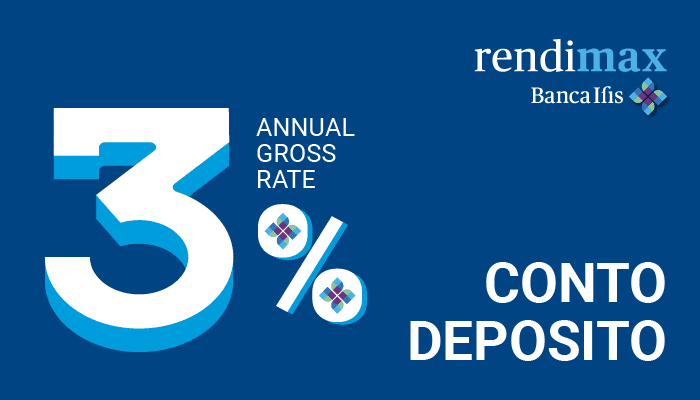- Third edition of Banca Ifis’s “Economy of Beauty” Market Watch presented: the segment grows by +16% over 2021, surpassing pre-Covid GDP levels of 2019
- In 2022, beauty businesses accounted for 56% of national GDP growth
- The study was presented at the Fortuny Museum in Venice on the occasion of the celebration of 40 years since the foundation of Banca Ifis
- The “Economy of Beauty” is one of the projects of Kaleidos, the Bank’s Social Impact Lab that promotes social impact initiatives in favour of territories, people and communities
Venice, 28 September 2023 – In 2022, the value of the Italian Economy of Beauty was close to 500 billion Euro, up 16% over 2021 and 8% over 2019, surpassing pre-Covid levels. This is what emerges from the 2023 edition of the “Economy of Beauty”, the study carried out by the Banca Ifis Research Department as part of Kaleidos – the Bank’s Social Impact Lab that promotes initiatives in favour of communities and people – with the aim of representing the excellence of “Made in Italy” and which, over the years, has become a platform that gives voice to the national entrepreneurial fabric and offers decision-makers a useful tool to support a sector that is the pride of our country in the world. In addition to measuring the economic value of Italian companies operating in the beauty segment, in 2023, the study also delved into the peculiarities of a model that is unique in the world, namely the inseparable union between craftsmanship and manufacturing.
Economy of Beauty 2023: the study at a glance
According to the Market Watch produced by the Banca Ifis Research Department, there is more and more Beauty in the Italian GDP. By the end of 2022, the contribution of this particular sector of the economy to the national Gross Domestic Product stood at 26,1%, confirming the exceptional driving capacity of the national production system. The Economy of Beauty made an important contribution to the recovery of the Italian economy after the two-year pandemic: in 2022, it accounted for 56% of the increase in national GDP over the previous year and even 33% of the increase over 2019, the last pre-Covid year.
More generally, the value of the Economy of Beauty reached 499 billion Euro in 2022, growing by +16% compared to 431 billion Euro in 2021. In actual fact, this is more than double the growth of the rest of the Italian production system. Particularly interesting is the fact that the GDP growth produced by the Economy of Beauty is also positive when comparing with 2019, the last year before Covid-19. Over the period, this grew by +8%, certifying a full recovery from the pandemic crisis. Development has been intense in all sectors: cultural and landscape tourism and both design-driven and purpose-driven enterprises. The convergence of “beautiful and well-made” and “good workmanship” increasingly seems to express a driving force for the entire Italian economy.
The growth in value produced compared to 2019 (+ 37 billion Euro) was generated 47% by purpose-driven businesses, 29% by cultural and nature tourism and 24% by design-driven businesses. At a segment level, 8 segments contributed to the growth of Beauty GDP compared to 2019: Agribusiness (13 billion Euro) and Tourism (11 billion Euro) are the ones that recorded the largest increase, but also Technology, Cosmetics, Home System, Environment, Watch & Jewellery and Automotive did well, thanks to the strong development of the purpose-driven approach.
The savoir-faire of the Masters of Art as the foundation of “Made in Italy”
For the 2023 edition of the “Economy of Beauty” Market Watch, the Banca Ifis Research Department has chosen to dedicate a special focus to the extent to which the excellence of Made in Italy manufacturing originates from the work of the Masters of Art. The main evidence is that artisan “savoir faire” still contributes 54% of the turnover of Italian manufacturing. In almost 9 out of 10 cases, manufacturing companies consider craftsmanship as not replaceable by machinery. In an increasingly global business, where international markets demand differentiating positioning, representing the quality and uniqueness of Italian products is one of the challenges our country’s manufacturing industry is called to face.
According to Market Watch findings, for Italian manufacturing companies, the added value of craftsmanship plays a significant role in production, both in the design and realisation phases. For 53% of the companies surveyed, craftsmanship is not a mere pursuit of luxury, but a concrete tool to give shape to ideas, to be put into practice in the prototyping phase.
In this sense, savoir-faire is identified by 8 out of 10 companies as a distinctive factor of competitiveness in the market because it enables them to respond effectively to new trends and fashions, as indicated by as many as 91% of manufacturing entrepreneurs. From this perspective, artisans are configured as figures capable of giving uniqueness to the product, integrating contemporary interpretation with the attribution of a value in the sign of tradition, innovation and sustainability. This mode, which derives from the hybridisation of craftsmanship and manufacturing, represents the true Italian production model of Made in Italy.
At the same time, however, the artisan profession today is affected by a rapidly changing demographic, economic and social system. The decline in artisan enterprises (-32% of active operators since 2000, focusing on those in manufacturing) speaks of the complexity of finding innovative ways to grow and involve the younger generations.
The 2023 study also analysed the difficulties encountered by artisan enterprises working with the manufacturing industry, penalised by a significant reduction in their number and a progressive ageing of the artisans themselves. Over the past two years, many artisan enterprises (41%) have been faced with a generational changeover, often linked to the transfer of the business. The most common strategies to ensure continuity of businesses are the maintenance of family tradition and the direct training of new staff.
What can be done to avoid this, preserving the ability of the Masters of Art to express the culture and identity of territories and to help manufacturing companies turn ideas into a product? The artisans are also calling for changes to the current school curricula through the enhancement of classes that are able to show young people the creativity associated with artisan works and thus ignite their imagination. In a parallel fashion, they would also like to see the introduction of tax incentives for those who undertake an activity in this segment. On the other hand, 93% of manufacturing companies confirm the trend of internalisation already underway and express their intention to bring artisan skills within the perimeter of their company. The strategy most frequently adopted to bring this internalisation to fruition is coaching with someone who is already an expert in the trade (indicated by 81% of the companies), while much less use is made of more theoretical training courses (12% of the companies).
The “Economy of Beauty 2023” volume
The “Economy of Beauty 2023” Market Watch was presented on Thursday, 28 September at the Fortuny Museum in Venice, during a public event that kicked off the celebrations for the 40th anniversary of the Banca Ifis foundation.
The study was also collected in a volume that includes the testimonies of eleven protagonists of the Economy of Beauty: Gian Maria Tosatti, Giovanni Bonotto, Giulio Cappellini, Brunello Cucinelli, Antonio De Matteis, Barbara Fornasetti, Gian Luca Gessi, Silvia Grassi Damiani, Alessandro Illiprandi, Alberto Masotti and Michele Bugliesi.
The full version of the “Economy of Beauty 2023” Market Watch is available at the link:
https://www.bancaifis.it/en/about-us/research-projects/the-economy-of-beauty/





